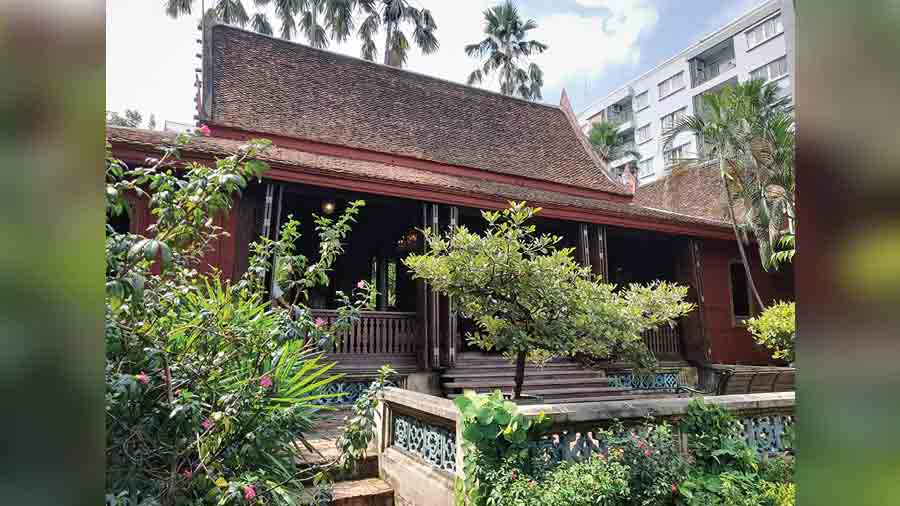A winding lane guides visitors towards the Saen Saep canal in Bangkok’s Siam locality. At the end of the lane, you can see a spacious plot of land adorned with numerous traditional Thai-style wooden houses. The compound features water bodies and gardens in traditional Thai style, presenting a striking contrast with the concrete jungle that surrounds it. This is none other than the museum housing the private collection of James Harrison Wilson Thompson, the American architect and silk tycoon widely known as Jim Thompson.
Origin of Thailand’s first global fashion brand

The guide briefs the guests before the start of the tour
Thompson’s connection with Thailand originated during World War II, when he was stationed in Bangkok as part of the American army. It was during this time that he discovered the art of Thai silk making in the Ban Khura region of Bangkok. Although he returned home after the war, he soon came back to collaborate with the silk weavers of Ban Khura, situated on the northern bank of the Saen Saep canal. In 1948, Thompson established a silk manufacturing company and named it ‘Thai Silk Company Limited’. In a remarkably brief period, the company gained prominence in the fashion world, earning recognition from Vogue to Hollywood to Broadway. Jim Thompson’s company became Thailand’s first global fashion brand.
Thompson’s deep admiration for traditional art forged a close bond with the weaving community. He deliberately maintained his company on a cottage-based model, contributing to the welfare of poor weavers. Predominantly comprising women, working from the comfort of their homes, the workforce not only retained their roles in the household but also assumed the role of breadwinners. Thompson worked tirelessly to sustain the traditional livelihood and culture of the weavers and silk farmers.
Jim Thompson: A silk tycoon and an art collector
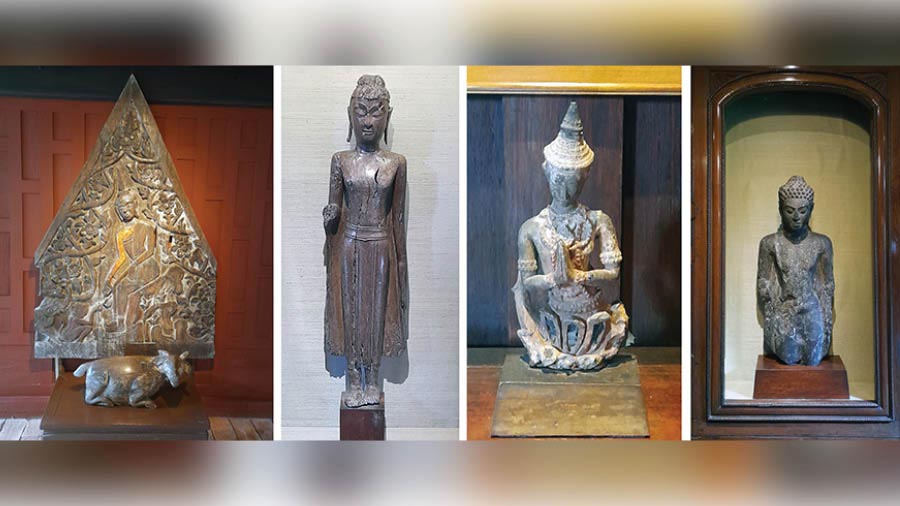
A collage of artefacts in display at the Jim Thompson House Museum
As Thompson’s business prospered, he sought an expansive parcel of land for his residence. A decade after establishing his silk company, Thompson acquired a substantial plot on the southern side of the Saen Saep canal, directly across from the weavers’ village. After acquiring the land, Thompson initiated the purchase of old traditional wooden houses from various parts of Thailand, including Ayutthaya, the former capital of Thailand. These houses were meticulously dismantled, transported down the Chao Phraya River, and reassembled on the new plot. The resulting complex transformed into a quaint enclave of traditional Thailand.

Porcelain crockery at the Jim Thompson House Museum
Thompson enhanced the ambiance by importing statues, artefacts, and wall paintings from Thailand and beyond to adorn his new abode. Thus, evolving from a war veteran turned silk tycoon, Thompson solidified his position as an art collector, aficionado of traditional houses and a prominent Western socialite in post-World War II Bangkok.
Turning Jim’s home to museum after his disappearing act
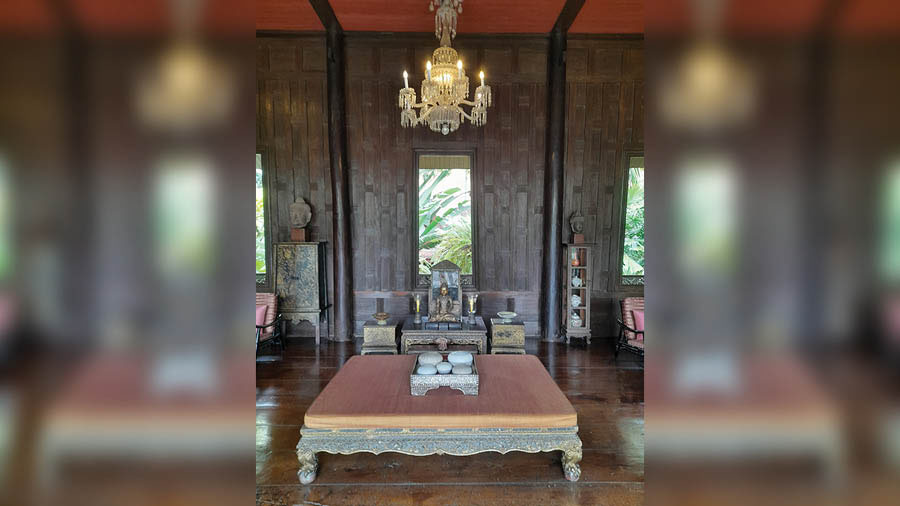
The grand drawing room of the museum
Sadly, his good days were short-lived. He mysteriously vanished while hiking in the Cameroon Highlands of Malaysia on March 26, 1967, seemingly evaporating without a trace and never returning. The circumstances surrounding his disappearance continue to baffle everyone to this day. After his vanishing act, the oversight of his grand residence and silk enterprise fell under the purview of the James H.W. Thompson Foundation, enjoying royal patronage from Thai princess Maha Chakri Sirindhorn. Transforming his home into a museum, it was opened to the public.
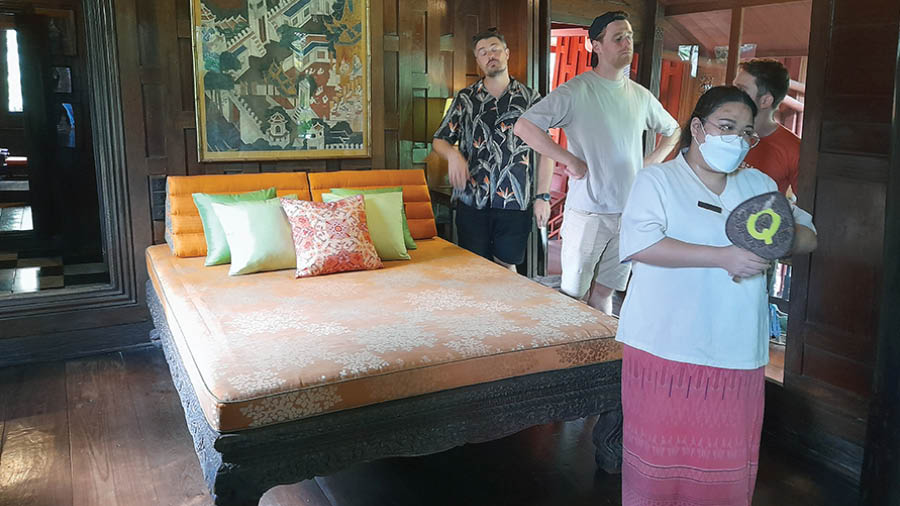
Guide and visitors inside the bedroom of Jim Thompson House
Today, the Jim Thompson House Museum encompasses a café and a retail outlet. The museum extends a guided tour into Jim Thompson's residence, narrating the story of this remarkable man and his flamboyant lifestyle.

Visitors at the café inside the museum
The tour guides visitors through an array of scattered wooden houses connected by pathways that wind through wooded landscapes adorned with water features. These houses once functioned as bedrooms, dining areas, drawing rooms, and guest quarters. Each section is adorned with artefacts collected from across Southeast Asia — ranging from Buddha statues, made of stone and wood, to other wood carvings and scroll paintings.
Silk shopping and more
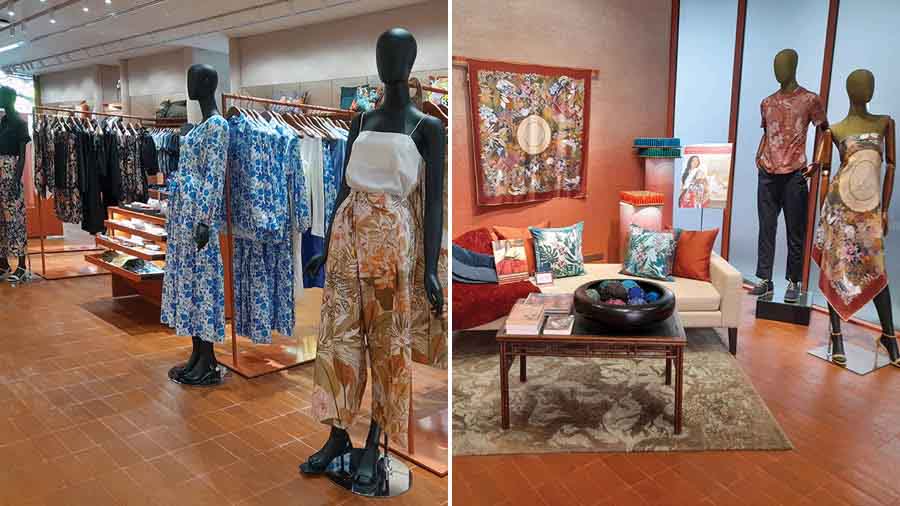
Inside the sales outlet of the museum
The tour ends at a habitat centre, where captivating photos and narratives unfold the remarkable story of Jim Thompson. Within this space, visitors encounter displays of equipment employed in the silk manufacturing process, accompanied by detailed descriptions chronicling the evolution of Thai silk. Bringing the journey full circle, the tour concludes with a visit to the sales outlet, showcasing a diverse array of silk items. Sadly, people with very deep pockets can afford to bring something back home from there. With the visa fee waived for Indians till May 2024, it is an opportune time to explore Thailand, so do consider a visit to Jim Thompson’s House — a true gem among Bangkok’s lesser-known tourist spots.
Travel information:
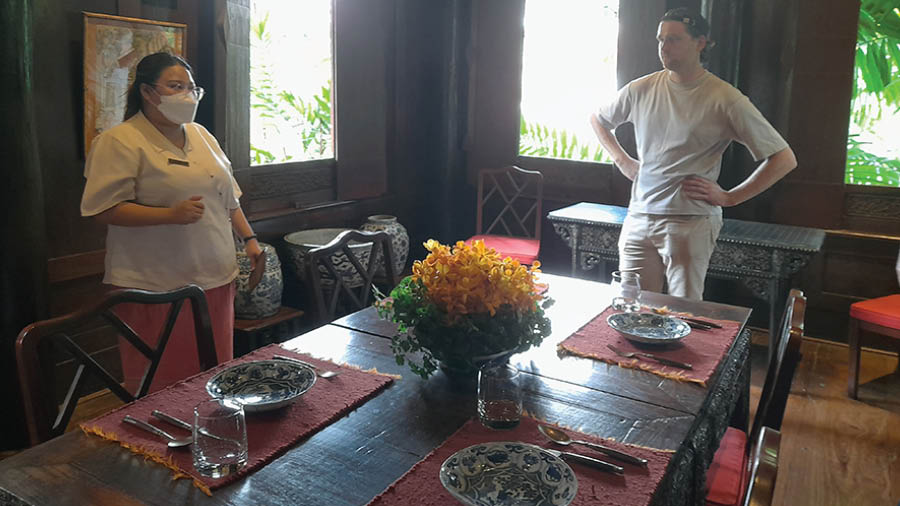
The guide and a guest at the dining hall of Jim Thompson House
Getting there: Situated around 300 metres from the National Stadium BTS (sky rail) station.
Timing: 10am to 6pm, with the last guided tour commencing at 5 pm.
Entry fee: For adults, the fee is 200 Baht, while visitors under 22 years are charged 100 Baht (ID required). Children under 10 years of age enjoy free entry when accompanied by an adult. The tour is available in English, French, Japanese, Chinese and Thai.
Photography: Limited in certain areas, but mobile photography is generally permitted.
Dress code: While there is no specific dress code like we see in Thai temples, visitors are required to remove their shoes upon entering the house.
